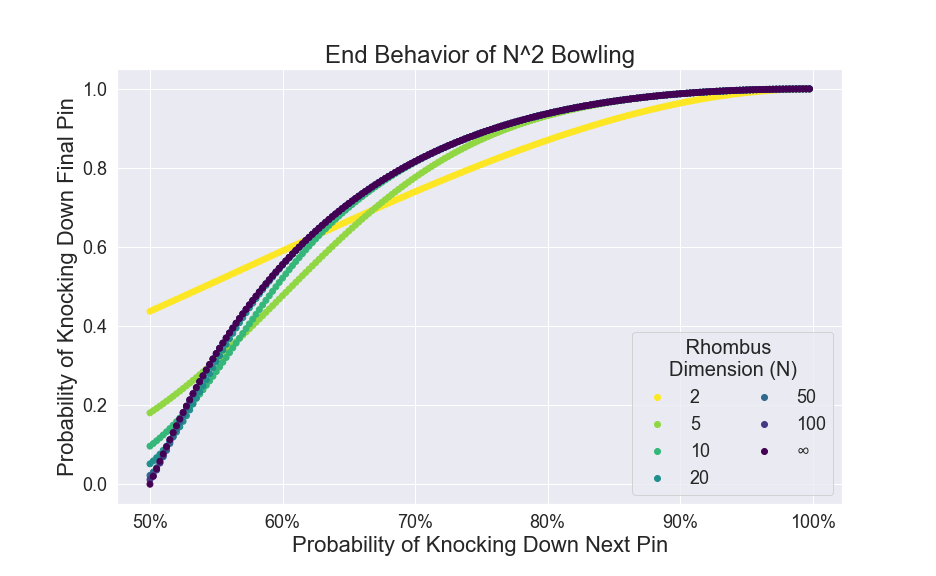Can You Knock Down The Last Bowling Pin?¶
Riddler Classic¶
Magritte the bowler is back! This time, he is competing head-to-head against fellow bowler Fosse. However, rather than knocking down 10 pins arranged in a triangular formation, they are trying to knock down N2 pins (where N is some very, very large number) arranged in a rhombus, as shown below:

When Magritte rolls, he always knocks down the topmost pin. Then, if any pin gets knocked down, it has a 50 percent chance of knocking down either of the two pins directly behind it, independently of each other. (If there is only one pin directly behind it, then it too has a 50 percent chance of being knocked over.)
Fosse is a stronger bowler than Magritte. Like Magritte, she always knocks down the topmost pin. But each pin that’s knocked down then has a 70 percent chance (rather than Magritte’s 50 percent) of knocking down any of the pins directly behind it.
What are Magritte’s and Fosse’s respective probabilities of knocking down the bottommost pin in the rhombus formation?
